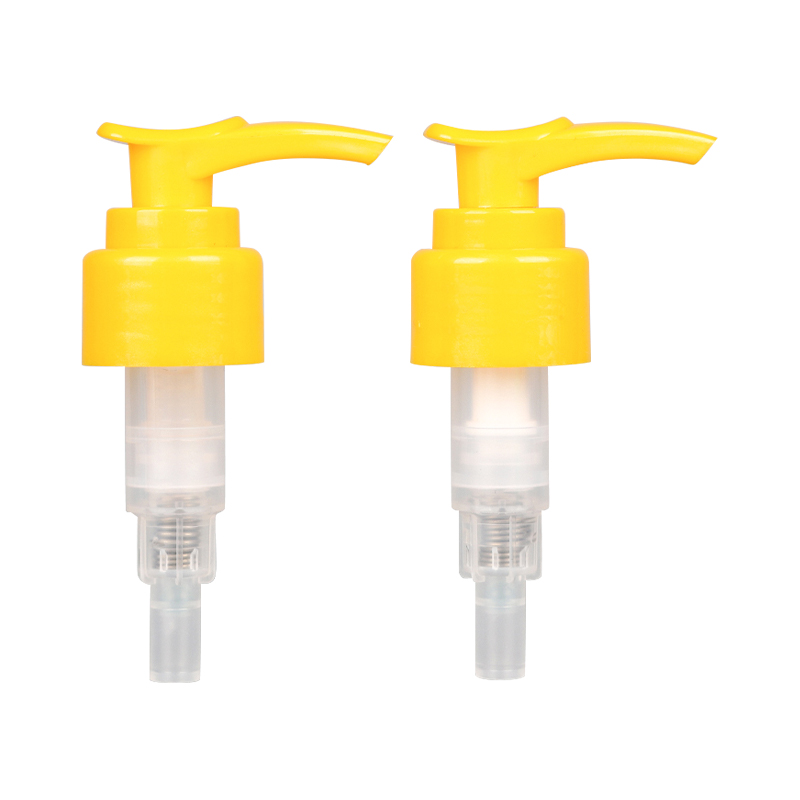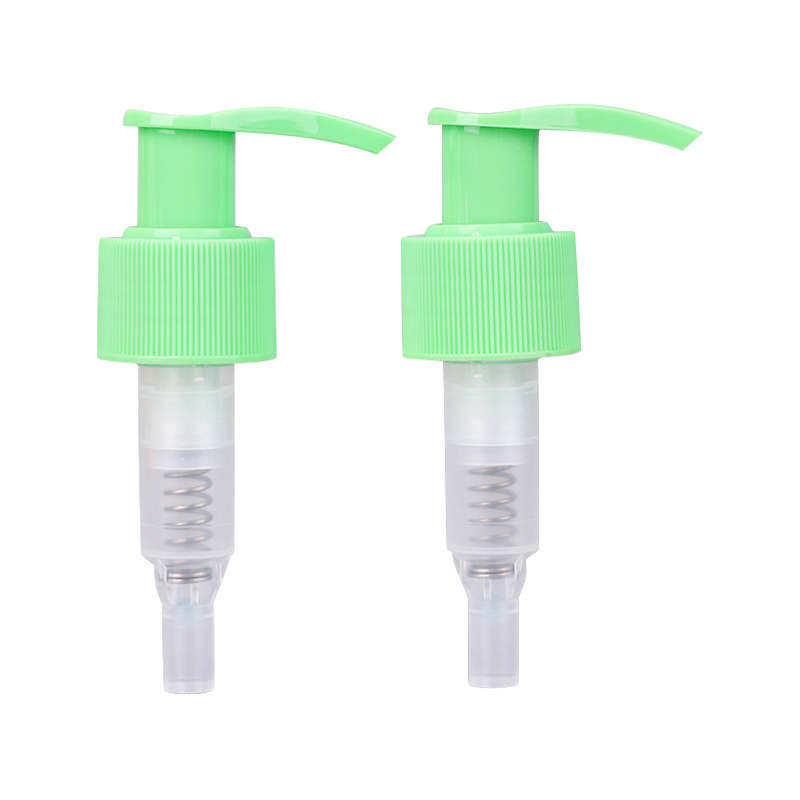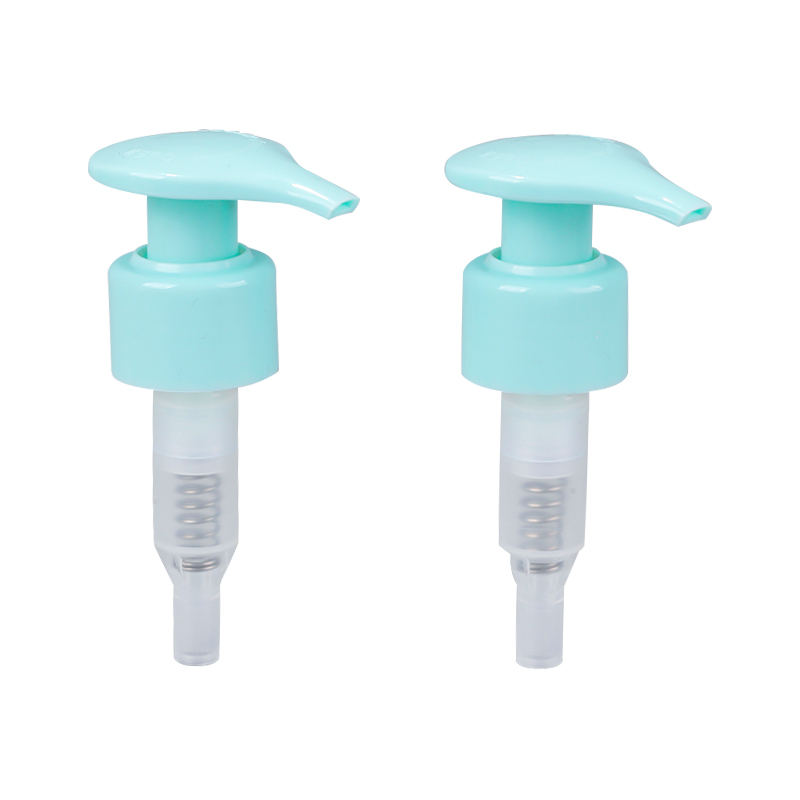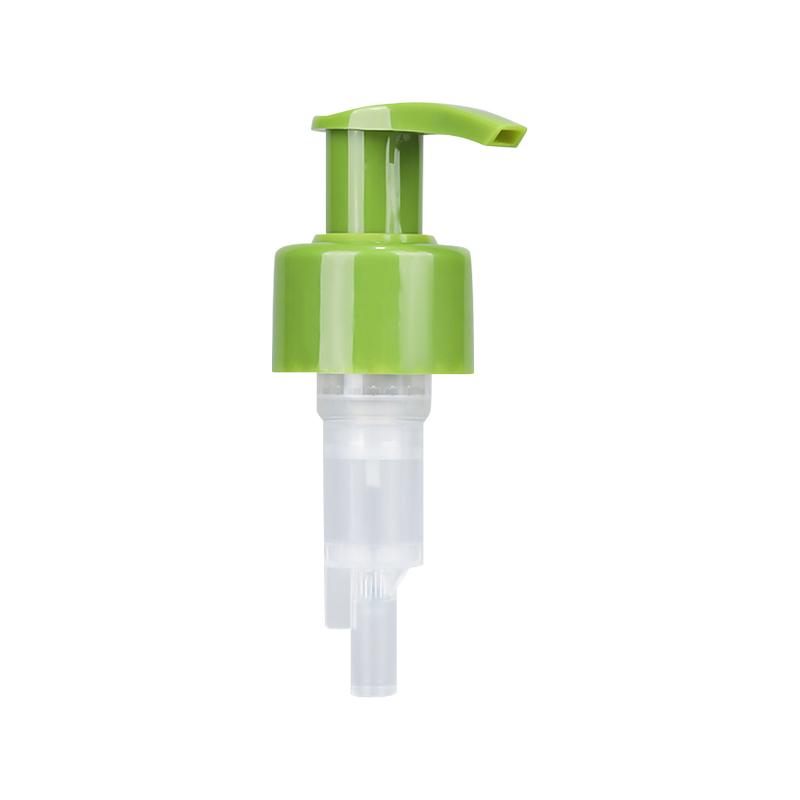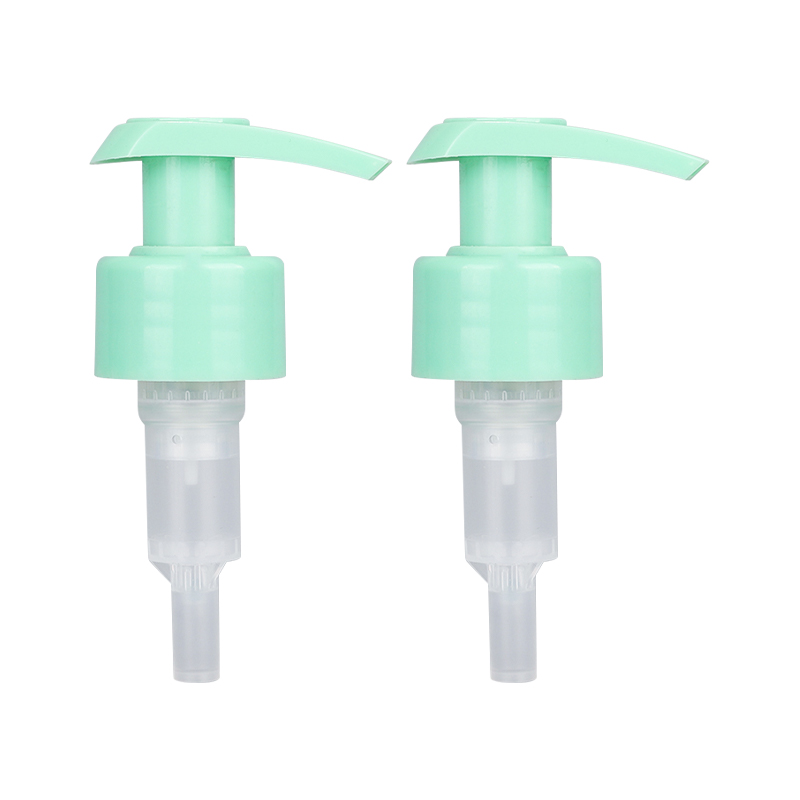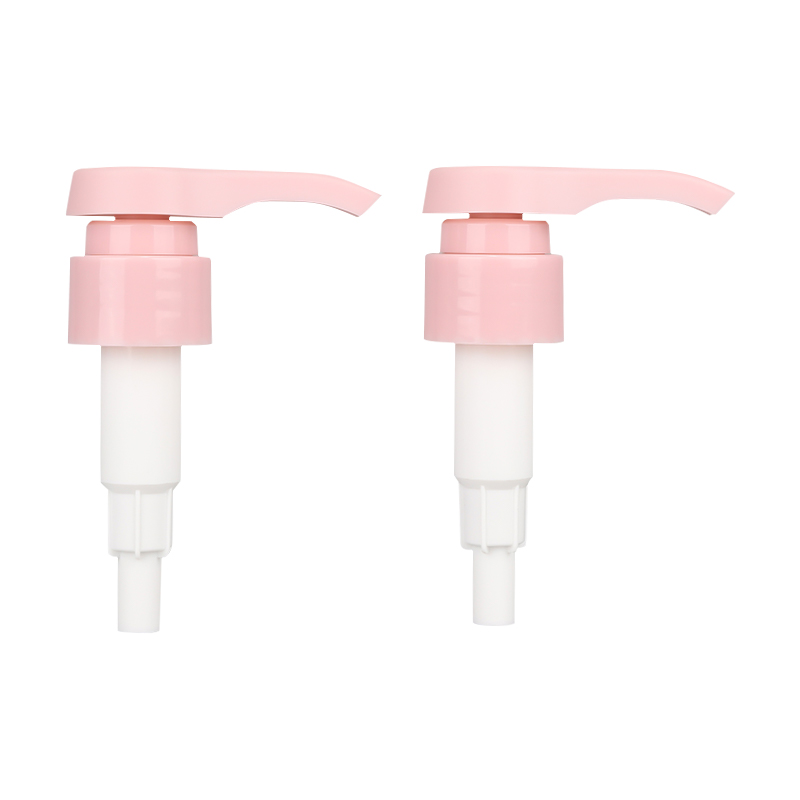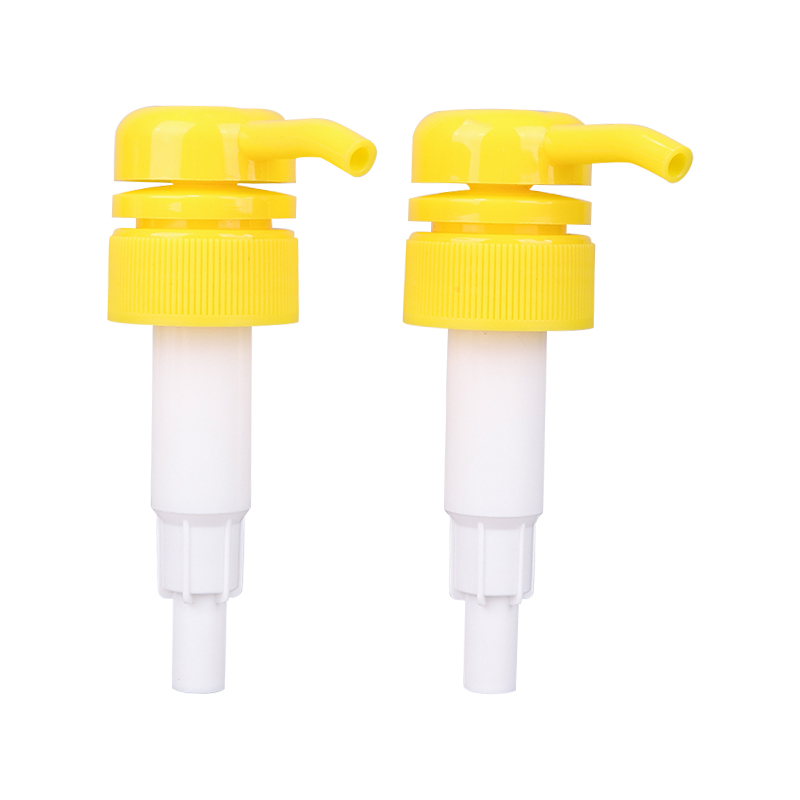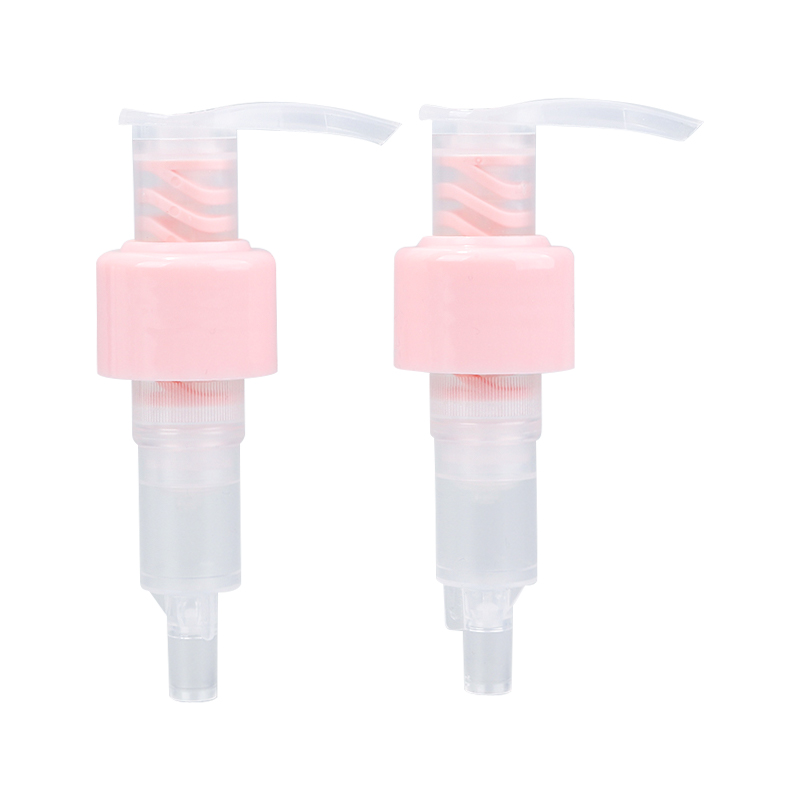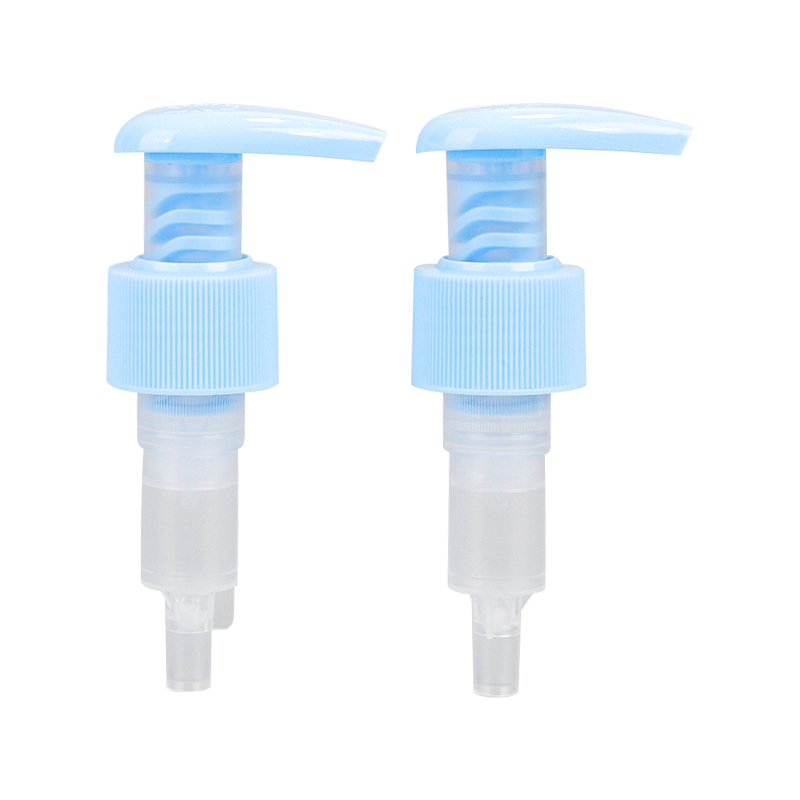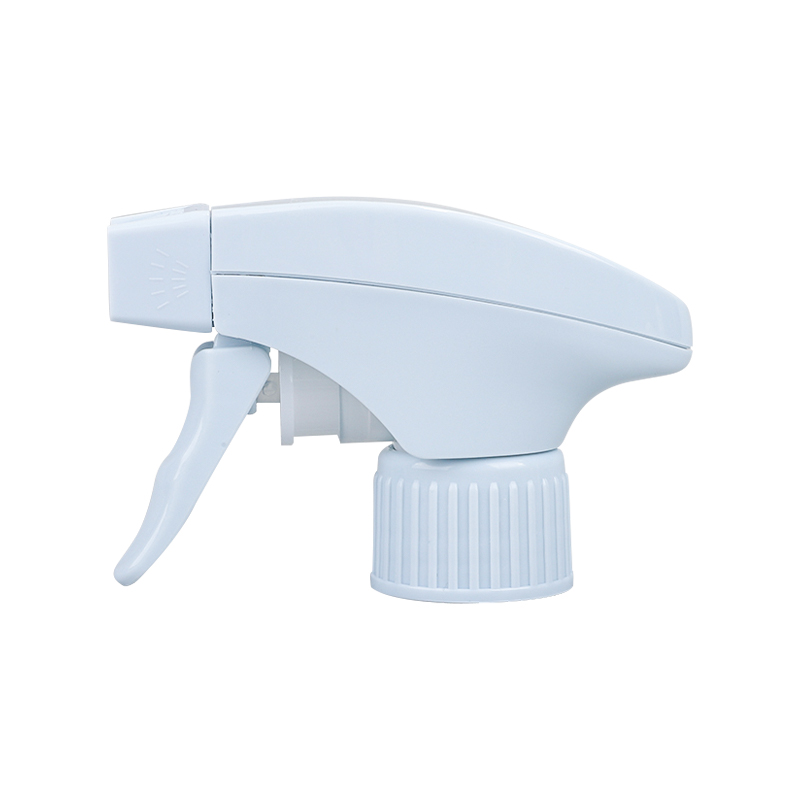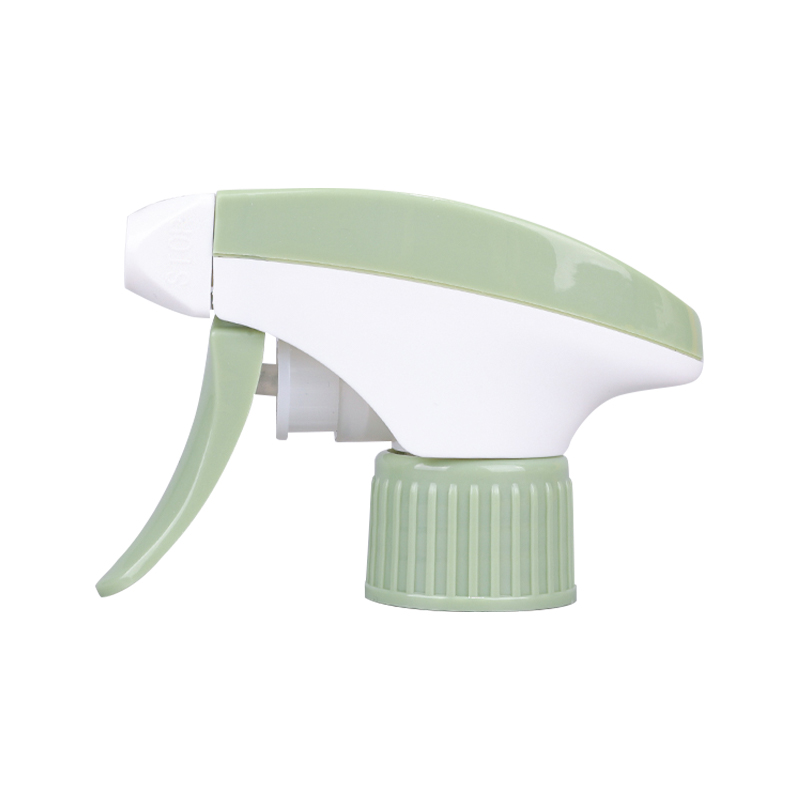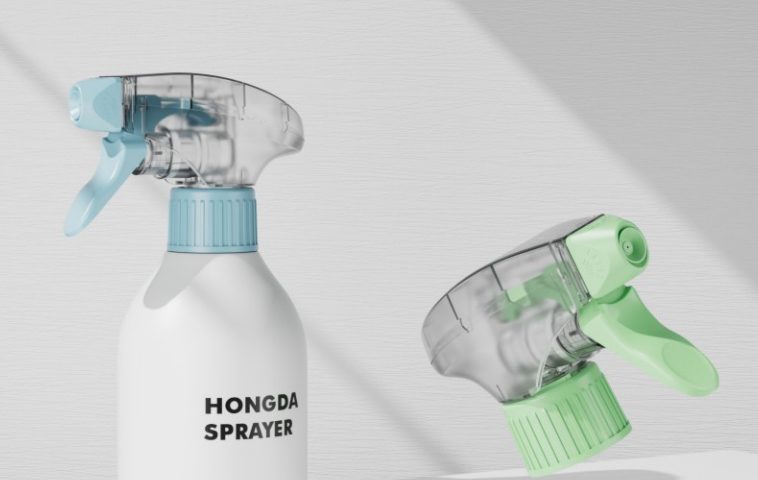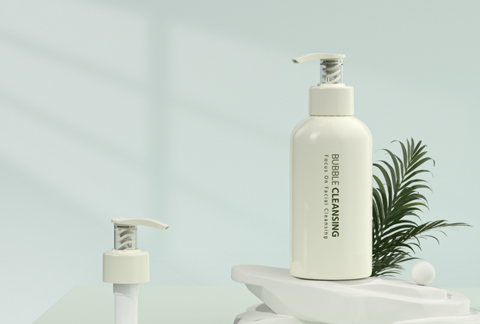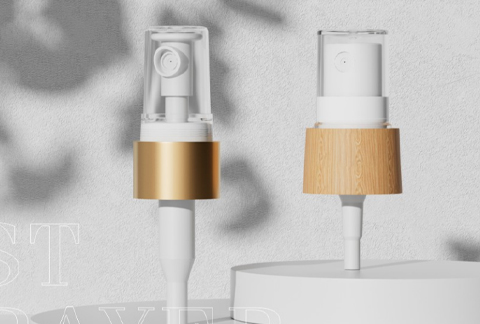What are the main structural components of plastic trigger sprayer?
Plastic trigger sprayers can be found everywhere in our daily lives, from cleaning supplies to gardening products, and their efficient and convenient spraying function greatly facilitates users. This seemingly simple device is actually composed of multiple precisely matched structural components, each of which plays a vital role in the overall performance, durability and user experience of the sprayer.
Nozzle
The nozzle is one of the core components of the plastic trigger sprayer, which directly determines the spray pattern and droplet size. High-quality nozzles are usually made of corrosion-resistant materials and are precisely processed to ensure uniform and delicate atomization. Common types of nozzles include direct-beam, atomizing and foaming. Direct-beam nozzles are suitable for applications that require precise aiming and strong flushing, such as local cleaning; atomizing nozzles produce fine and uniform mist, which is often used for air fresheners and plant spraying; while foaming nozzles can produce rich foam, which is often used in kitchen and bathroom cleaners, providing better adhesion. The advanced nozzle technology used by our company ensures that the spray is fine and uniform, without dripping, bringing you an excellent user experience.
Trigger
The trigger is the main interface for users to interact with the sprayer. Its design directly affects the comfort and convenience of operation. A high-quality trigger should have an ergonomic design, be comfortable to hold, effortless to press, and be able to withstand repeated pressing without being easily damaged. The internal mechanical structure, such as the lever and spring, needs to be precisely matched to ensure that each press can smoothly drive the pump body to work. Our triggers have been tested for durability tens of thousands of times to ensure that they are sturdy and durable, comfortable to hold, and will not feel tired even after long-term use.
Pump Body
The pump body is the core power unit of the plastic trigger sprayer, responsible for extracting liquid from the bottle and spraying it out under pressure. It usually consists of a piston, a cylinder, and a sealing ring. When the trigger is pressed, the piston moves in the cylinder, generating negative pressure to suck in the liquid, and then pressurizing it to push the liquid out. The material selection and processing accuracy of the pump body directly affect the liquid suction efficiency and sealing of the sprayer. A good pump body can ensure that the sprayer can work stably every time without failing to suck water or leaking liquid. Our company's sprayers use a high-precision pump body design, which allows for smooth liquid suction, excellent sealing, and no leakage, ensuring that you can use them with peace of mind every time.
Piston and Valve
The piston reciprocates in the pump body and is a key component that generates pressure. The precision of its fit with the cylinder wall is crucial and determines the pumping efficiency of the pump body. The valve (usually a one-way valve) controls the flow of the liquid, ensuring that the liquid only flows in one direction to prevent backflow. The material selection of these components needs to consider compatibility with various chemical liquids and corrosion resistance. We use special materials to manufacture pistons and valves to ensure that they can maintain excellent performance in various harsh environments and greatly extend the service life of the product.
Dip Tube
The dip tube is a thin tube that connects the pump body to the bottom of the liquid, responsible for transporting the liquid from the bottom of the container to the pump body. The length and diameter of the dip tube need to match the size of the container to ensure that the liquid can be fully sucked up and reduce residue. To avoid clogging, high-quality dip tubes usually have a smooth inner wall design. Our dip tubes are optimized to maximize the use of the liquid in the bottle, reduce waste, and improve product economy.
Spring
The spring plays a reset role in the trigger sprayer. After each press, the spring will reset the trigger and piston to the initial position, ready for the next press. The material and elastic coefficient of the spring directly affect the rebound force and service life of the trigger. High-quality springs should have good fatigue resistance and maintain stable performance even after repeated use. We use high-quality stainless steel springs to ensure that the sprayer rebounds strongly and is durable, providing you with a consistent and high-quality experience.
Seals and Gaskets
Seals and gaskets are key components to prevent liquid leakage. They are usually made of rubber or elastomeric materials and are installed at various joints of the pump body to ensure a tight fit between the components. High-quality seals can effectively prevent liquid leakage, especially when storing corrosive liquids, and their importance is self-evident. Our products use multiple high-quality seals to effectively prevent leakage, and even if they are left for a long time or inverted, they can ensure that the liquid does not overflow, providing you with the greatest degree of peace of mind.
Cap
The cap is the part that connects the sprayer to the bottle, and is usually designed with threads to ensure a tight connection. The internal structure of the cap sometimes also includes a leak-proof gasket. A well-designed cap not only ensures a secure connection, but also makes it easy for users to install and replace. We offer a variety of standard cap sizes to perfectly fit various containers, easy to install, firm and reliable, and provide you with a seamless user experience.
Which principle is used in the design of plastic trigger sprayer
Application of Bernoulli principle and Venturi effect
One of the core working principles of plastic trigger sprayer is the ingenious combination of Bernoulli principle and Venturi effect. When you press the trigger, the internal piston movement will quickly push the air through a narrow channel, namely the Venturi tube. According to Bernoulli's principle, when the flow rate of the fluid increases, its internal pressure will decrease. Therefore, when the air passes through the Venturi tube at high speed, the air pressure in this area will drop significantly, forming a negative pressure zone.
This negative pressure zone is connected to the liquid in the container through a dip tube. Because the external atmospheric pressure is higher than the negative pressure in the dip tube, the liquid is "pushed" into the dip tube under the action of atmospheric pressure and lifted upward. When the liquid reaches the Venturi tube area, the high-speed air will shear and atomize it into fine droplets, and spray it out of the nozzle together with the air flow. Our company has made precise optimizations in the design of the Venturi tube to ensure more efficient negative pressure generation, thereby achieving a more delicate and uniform atomization effect, and maximizing your use experience.
Suction and pressurization of piston pump
The piston pump inside the sprayer is a key component for achieving liquid suction and pressurization. When you release the trigger, the internal return spring pushes the piston back. At this time, a negative pressure chamber is formed between the piston and the pump body cylinder, and the liquid in the container is sucked into the pump body chamber through the dip tube and the one-way valve at the bottom under the action of atmospheric pressure. This process is called the suction stroke.
When you press the trigger again, the piston moves forward and exerts pressure on the liquid in the chamber. At this time, the one-way valve at the bottom is closed to prevent the liquid from flowing back, and the liquid outlet valve at the top is opened, and the pressurized liquid is forced to spray out through the nozzle. This process is called the pressure stroke. Our company uses high-precision piston and cylinder matching technology to ensure that each press can provide stable and strong pump pressure, thereby achieving continuous and uniform spraying, avoiding the intermittent spraying problem common in traditional sprayers.
Precision control of one-way valve
In plastic trigger sprayers, one-way valves play a vital role. They ensure that the flow direction of the liquid is one-way, thereby ensuring the efficient operation of the pump body. Usually, there are at least two one-way valves inside the sprayer: one is located at the bottom of the dip tube or the suction port of the pump body to control the suction of the liquid; the other is located at the outlet of the pump body to control the spraying of the liquid.
When the piston returns to the position to suck the liquid, the suction valve opens and the outlet valve closes. When the piston is pressurized to spray, the suction valve closes and the outlet valve opens. The precise matching of these valves ensures that the liquid can be efficiently sucked and sprayed without backflow or leakage. Our company uses high-quality materials that are wear-resistant and corrosion-resistant to manufacture one-way valves, and strictly controls their processing accuracy to ensure that the sealing and response speed of the valves are in the best state, thereby extending the service life of the sprayer and providing excellent leak-proof performance.
Energy storage and release of springs
The spring mainly plays the role of energy storage and release in plastic trigger sprayers, ensuring automatic reset after the trigger is pressed. When you press the trigger, the spring is compressed and stores potential energy. When you release the trigger, the potential energy of the spring is converted into kinetic energy, pushing the piston and trigger back to the initial position quickly, ready for the next spray cycle.
The material, wire diameter and number of turns of the spring are carefully calculated to provide just the right rebound force. Too strong elastic force will increase the pressing force and cause fatigue; too weak elastic force will affect the reset speed and spray effect. Our company selects high-quality high-elastic stainless steel springs, which have undergone rigorous fatigue testing to ensure that they can maintain stable performance after tens of thousands of presses, bringing you an easy and smooth pressing experience.
Nozzle atomization mechanism
The design of the nozzle is the key to achieving different spray modes. In the most common atomization mode, high-pressure liquid passes through the swirl chamber inside the nozzle. In this chamber, the tangential flow of the liquid causes it to rotate at high speed. Subsequently, the rotating liquid is forced through a very small spray hole. When the high-speed rotating liquid leaves the spray hole, due to its huge surface tension being overcome, the liquid will instantly break and disperse into extremely fine droplets, forming a uniform mist.
For the direct injection mode, the inside of the nozzle is usually a simple cylindrical hole, which allows the liquid to spray out in a linear shape. The foam mode introduces an additional air mixing mechanism to fully mix the liquid with the air and spray out foam. Our company has a number of patented technologies in nozzle design. We can provide a variety of spray modes from ultra-fine atomization to strong direct injection according to different application requirements to ensure that each spray can achieve the best effect.
How to control the atomization effect of plastic trigger sprayer
Plastic trigger sprayer, as a spray tool widely used in daily life, the quality of its atomization effect directly affects the user experience and product performance. Professional atomization effect control is a key indicator to measure the manufacturing level of a high-quality sprayer.
Nozzle design and atomization core
The nozzle is the core component of the plastic trigger sprayer to achieve the atomization effect. Its internal structure, aperture size and hole design play a decisive role in the atomization quality.
Aperture and droplet size: The smaller the aperture of the nozzle, the easier it is for the sprayed liquid to form fine droplets under the same pressure. Conversely, large-aperture nozzles tend to produce larger droplets or even water columns. Accurately controlling the nozzle aperture is the basis for achieving an ideal atomization effect.
Hole type and atomization form: The nozzle hole design is diverse, and common ones are circular, elliptical, flat, etc. Circular apertures usually produce conical or fan-shaped atomization, which is suitable for uniform coverage; flat apertures can produce flat spray, which is suitable for linear spraying. Unique internal flow channel design, such as volute or vortex chamber design, can give the liquid rotational kinetic energy, further promote the liquid fragmentation and atomization, and form a finer and more uniform atomization effect.
Material and wear resistance: The choice of nozzle material is crucial. Corrosion-resistant and wear-resistant materials, such as PP, PE and other high-performance plastics, can ensure that the nozzle maintains stable atomization performance during long-term use and avoid the deterioration of atomization effect due to wear.
Pump body structure and pressure output
The pump body of the sprayer is the source of spray power. Its structural design directly affects the stability and consistency of pressure output, and thus determines the atomization effect.
Piston and cylinder match: The precise match between the piston and the cylinder is the key to ensuring stable pressure output. Good sealing performance can prevent air leakage and ensure that each press can generate sufficient pressure.
Spring and pressing stroke: The elastic coefficient of the spring and the pressing stroke determine the pressure accumulation capacity and release speed of the pump body. Reasonable spring design can make the pressing feel comfortable while ensuring continuous and stable spray pressure.
Single pump and dual pump system: The traditional single pump system produces only one spray per press, while the dual pump system can produce two or even more sprays in one press, achieving longer continuous spraying, and can also optimize the uniformity of atomization to a certain extent.
Liquid circuit system and liquid delivery
The liquid circuit system is the channel connecting the liquid storage bottle, pump body and nozzle, and its design also has an important impact on the atomization effect.
Straw length and diameter: The length and diameter of the straw must match the overall size of the sprayer and the viscosity of the liquid. A straw that is too long will increase the resistance to liquid suction and affect the efficiency of liquid delivery; a too small diameter may cause poor liquid suction or bubble generation, which will affect the continuity of the droplets.
Filter design: The filter at the end of the straw can effectively prevent impurities in the liquid from entering the pump body and nozzle to avoid blockage, thereby ensuring the stability and durability of the atomization effect.
Anti-backflow valve: Some high-end sprayers will integrate an anti-backflow valve to prevent liquid backflow, maintain the pressure in the pipeline, and ensure that the spray can be started quickly when the next press is made.
Material selection and chemical compatibility
The material selection of plastic trigger sprayers is not only related to the aesthetics and durability of the product, but also closely related to the stability of the atomization effect.
Main body material: The sprayer body is usually made of plastics such as PP and HDPE. These materials have good chemical corrosion resistance and are compatible with a variety of detergents, hairdressing products or gardening agents to avoid material degradation affecting the spray performance.
Sealing ring material: The material selection of the sealing ring is particularly important, such as nitrile rubber, silicone rubber, etc. It is necessary to ensure that it can still maintain good elasticity and sealing after long-term contact with liquid, prevent leakage and air leakage, and thus maintain stable pressure output.
Surface treatment: Some special application scenarios, such as spraying corrosive liquids, require special anti-corrosion treatment of the internal contact surface to extend the product life and maintain excellent atomization effect.
Quality control and performance testing
Strict quality control and comprehensive performance testing are the last line of defense to ensure the consistency and reliability of the atomization effect of plastic trigger sprayers.
Flow test: Perform flow tests regularly to ensure that the amount of liquid sprayed by the sprayer per unit time meets the design standards.
Spray angle and coverage test: Use professional equipment to measure the fan angle or cone angle of the spray and evaluate its coverage uniformity at different distances.
Droplet size distribution test: Use advanced technologies such as laser diffraction to accurately measure and analyze the droplet size generated by the spray to ensure that the droplet size distribution meets expectations and avoid large droplets or unevenness.
Durability test: Simulate daily use and perform repeated press tests on the sprayer to evaluate the attenuation of its atomization effect after long-term use.
Leakage test: Perform strict sealing tests on the finished product to ensure that there is no risk of leakage during transportation and use.
How to ensure the air tightness and liquid tightness of plastic trigger sprayer
Sealing structure design and optimization
The design of sealing structure is the cornerstone to ensure the air tightness and liquid tightness of sprayer. Precise structural design can effectively block the leakage path of gas and liquid.
Connection between nozzle and bottle mouth: The connection between nozzle and liquid storage bottle mouth is a common leakage point. Usually, threaded connection is used with gasket or sealing ring. The accuracy of thread, thread tooth type and tightening torque are all important. The selection of material (such as nitrile rubber, silicone) and cross-sectional shape (such as O-ring, flat pad) of gasket or sealing ring needs to consider its compression deformation capacity, resilience and compatibility with liquid medium.
Internal seal of pump body: The seal between piston and cylinder, valve and valve seat inside the pump body is the key. The matching tolerance of piston and cylinder needs to be strictly controlled to ensure smooth sliding and no air leakage. The design of one-way valve (such as ball valve and duckbill valve) is to ensure that liquid flows in only one direction, effectively preventing backflow and leakage. The wear resistance, resilience and compatibility of the valve material with the liquid directly affect its long-term sealing performance.
Connection between the suction tube and the pump body: The connection between the suction tube and the pump body must also be firm and reliable to prevent air from entering or liquid from overflowing. Usually, a plug-in fit is used with a reinforcing rib or snap-on design to ensure a tight connection.
Material selection and performance matching
The selection of high-performance materials is the material guarantee for ensuring the long-term air tightness and liquid tightness of the sprayer. The physical properties, chemical stability and processing characteristics of the material must be fully considered.
Main body material: Polypropylene (PP) or high-density polyethylene (HDPE) is usually used for the sprayer body. These materials have excellent chemical corrosion resistance, good mechanical strength and dimensional stability, can resist the erosion of most daily chemicals, and are not prone to deformation and sealing failure.
Sealing material: The material selection of sealing components such as sealing rings, gaskets, and valves is crucial. Nitrile rubber (NBR) has good oil resistance and wear resistance; Silicone rubber (VMQ) is resistant to high and low temperatures and has good physiological inertness; Fluororubber (FKM) is suitable for more stringent chemical environments. When choosing, it is necessary to accurately match the liquid medium, temperature range and expected service life in the actual application scenario.
Spring material: The spring in the pump body is usually made of stainless steel. Stainless steel has good corrosion resistance and elastic fatigue strength, which can ensure that it can still maintain a stable rebound force after long-term pressing, and maintain the normal operation and sealing effect of the pump body.
Precision manufacturing and assembly process
High-precision manufacturing and strict assembly process are the process guarantees for achieving air tightness and liquid tightness. Any manufacturing deviation may cause sealing failure.
Mold accuracy: The mold design and manufacturing accuracy of each component of the sprayer are crucial. For example, the inner and outer diameters of the piston and cylinder, the nozzle aperture, the thread size, etc., must be within a very small tolerance range to ensure a close fit between the components. Advanced CNC machining technology and precision injection molding technology are the basis for achieving these high-precision components.
Injection molding process control: Parameters such as temperature, pressure, holding time, cooling time, etc. during the injection molding process need to be precisely controlled. Improper injection molding parameters may cause parts to shrink, warp, deform or generate internal stress, which in turn affects their dimensional accuracy and sealing performance.
Automated assembly: The introduction of automated assembly lines can significantly improve assembly accuracy and consistency. Robots or automated equipment can ensure that each component is installed in the correct position with precise force to avoid sealing problems caused by human errors. For example, the tightening torque control of threaded parts can effectively prevent damage to components due to over-tightening or leakage due to over-loosening.
Cleanliness control: The cleanliness of the production environment is also crucial. If fine dust, fibers or impurities enter the sealing area, they may form a leakage channel after assembly. Therefore, in the key assembly links, operations must be performed in a clean environment.
Quality testing and performance verification
Comprehensive quality testing and strict performance verification are the final links to ensure that the air tightness and liquid tightness of plastic trigger sprayers meet the standards.
Air pressure leakage test: This is the most direct and effective air tightness detection method. Place the sprayer in air at a certain pressure, or fill it with air at a certain pressure, monitor the pressure change through a pressure sensor, or observe whether bubbles are generated through water immersion to determine whether there is a leak.
Negative pressure leak test: Simulate the negative pressure state of the sprayer when it absorbs liquid, and detect whether it will inhale air under negative pressure conditions.
Hydraulic leak test: Fill the inside of the sprayer with liquid, apply a certain pressure, and observe whether there is liquid leakage outside. For parts with valves, reverse pressure tests are also required to ensure that the valves can still be effectively sealed under reverse pressure.
Functional test: In addition to separate sealing tests, functional tests are also required in simulated use environments. For example, press the sprayer repeatedly thousands of times, and then perform air tightness and liquid tightness tests again to evaluate its performance degradation after long-term use.
Drop test and transportation simulation test: Simulate the impact that the product may encounter during transportation and daily use, and test whether its air tightness and liquid tightness are still reliable after being stressed.
Dimension and appearance inspection: Use precision measuring instruments (such as three-coordinate measuring machines, optical projectors) to spot check key dimensions to ensure that they meet design requirements. At the same time, manual or machine vision systems check the product appearance to ensure that there are no defects such as cracks and burrs that affect sealing.
What are the common faults of plastic trigger sprayer?
Poor spray or no mist
One of the most common faults of sprayers is the inability to spray properly, which directly affects its basic function.
Clogged straw: This is the most common cause of failure. Impurity particles in the liquid, such as sediment, fiber or gel-like substances, may be sucked into the straw and stuck at the bottom of the straw or the connection between the straw and the pump body. This problem is particularly prominent when the inner diameter of the straw is too small or the filter at the end of the straw is missing/broken.
The straw is too long or too short: Mismatched straw lengths can make it difficult to absorb liquid. A straw that is too long may bend at the bottom of the bottle, forming an air blockage; a straw that is too short cannot reach the liquid at the bottom of the bottle, resulting in interrupted spraying.
Liquid viscosity is too high: Sprayers are usually designed to spray low-viscosity liquids. If the liquid viscosity exceeds the design range, the pump body may not be able to effectively absorb and push the liquid, resulting in poor spraying. High-viscosity liquids have difficulty passing through the tiny nozzle holes, which also affects the atomization effect.
Air inlet to the pump: If there is air leakage in the pump or the connection of the straw, the pump will suck in air instead of liquid when sucking liquid, resulting in the inability to form effective pressure and thus the inability to spray liquid. This is usually manifested as a small amount of bubbles instead of liquid spraying out after repeated pressing.
Liquid leakage problem
Liquid leakage is a key failure that affects user experience and product integrity and may occur in multiple parts of the sprayer.
Poor sealing of bottle mouth threads: When the sprayer is screwed into the bottle mouth, if the threads are not aligned, not tightened, or the sealing gasket/O-ring is damaged/missing, the liquid will leak from the connection between the bottle mouth and the sprayer. This not only causes waste, but may also corrode the outer packaging of the bottle or cause safety hazards.
Nozzle dripping: Liquid drips from the nozzle when it is not pressed, usually because the valve inside the nozzle is not sealed tightly. This may be due to aging, deformation, or impurities stuck in the valve parts, resulting in failure to close completely.
Failure of internal seal of pump body: Wear, aging or rupture of seals (such as rubber rings) of piston, cylinder or one-way valve inside the pump body will cause liquid to leak from inside the pump body to the outside, or effective pressure cannot be established when pressed.
Loose or cracked joints of components: The various plastic parts of the sprayer (such as pump head, trigger, straw) are connected by snaps or ultrasonic welding. If these connection points loosen or crack due to falling, aging or manufacturing defects, leakage paths will be formed.
Abnormal spray pattern
The ideal spray pattern should be uniform, continuous and meet the design requirements. Abnormal spray pattern will seriously affect the use effect.
Uneven atomization or water column: The most common reason is blockage of nozzle hole or deformation of internal flow channel. Partial blockage will cause spray deviation or irregular spray; complete blockage may directly spray water column instead of mist. Damage to the vortex chamber or atomizer sheet inside the nozzle will also lead to poor atomization effect.
The spray range is reduced or too large: Changes in the nozzle aperture (such as wear and tear) or deformation of the internal structure may change the diffusion angle and range of the spray. This will affect the coverage efficiency of the detergent or medicine.
Spray intermittent: During the pressing process, the spray appears intermittent. This may be caused by the pump body sucking air, unstable liquid supply (such as partial blockage of the suction tube) or the one-way valve being stuck.
Trigger pressing problem
The trigger is a component directly operated by the user, and its pressing feel and function directly affect the user experience.
Trigger stuck or unable to press: Excessive friction of the linkage mechanism between the trigger and the pump body, deformation of the components or foreign matter stuck may cause poor pressing. Spring damage or displacement may also cause the trigger to be unable to rebound or press.
Trigger breakage: When subjected to a large external impact, insufficient material strength or design defects, the trigger part may break, causing the sprayer to fail completely.
Rebound weakness: Fatigue or damage of the return spring inside the pump body will cause the trigger to rebound slowly or weakly after pressing, affecting continuous spraying.
Durability Issues
The long-term performance of the sprayer reflects its durability and reliability.
Material aging and embrittlement: Long-term exposure of plastic parts to sunlight, high temperature or chemicals may cause material degradation, embrittlement, discoloration, cracking, etc., which in turn affects the sealing performance and structural strength.
Chemical corrosion: When there is chemical incompatibility between the spray liquid and the plastic material, the liquid may corrode the internal parts of the pump body, seals and even the nozzle, causing functional failure or leakage.
Parts wear: The moving parts such as the piston, cylinder, and valve inside the pump body will experience mechanical wear during long-term repeated pressing, especially the surface of the friction pair, resulting in an increase in the fit clearance, affecting the pressure build-up and sealing performance.
Which industries are plastic trigger sprayers commonly used in?
Household cleaning and daily chemical industry
Household cleaning is one of the most common and widely used applications of plastic trigger sprayers. Its uniform spraying characteristics enable the detergent to fully cover the surface to be cleaned, improving cleaning efficiency.
Surface cleaners: Glass cleaners, kitchen oil and dirt cleaners, bathroom descaling agents, etc. are generally packaged in trigger sprayers. Its advantage is that it can accurately control the spraying range to avoid waste, and at the same time, it can spray the detergent in a fine mist to penetrate deep into the stains.
Air fresheners: Spray-type air fresheners rely on trigger sprayers to evenly spread fragrance particles into the air to achieve the effect of quickly refreshing the indoor environment.
Disinfectants: In the context of the normalization of the epidemic, the use of household disinfectants has surged, and trigger sprayers have become their ideal packaging form, which facilitates users to efficiently disinfect high-frequency contact surfaces such as furniture and door handles.
Clothing care agents: Ironing sprays, wrinkle sprays, etc., through fine atomization, make the liquid evenly adhere to the fibers of clothing, providing good care effects.
Gardening and Plant Care Industry
In the field of gardening, plastic trigger sprayers are a great helper for plant lovers and professional gardeners, and their fine spray can effectively protect plant health.
Foliar fertilizer and nutrient solution: Spraying foliar fertilizer evenly on plant leaves by spraying can help plants absorb nutrients quickly and promote growth. Trigger sprayers can produce moderate droplets to avoid the formation of water droplets trapped on the leaves, causing burns or diseases.
Insecticides and fungicides: The spraying of horticultural insecticides and fungicides requires precision and uniform coverage. Trigger sprayers can spray the agent in a fine mist, effectively attaching to the front and back of plant leaves and stems, improving the prevention and control effect while reducing agent waste.
Watering and moisturizing: For seedlings, succulents or plants that need to maintain high humidity, trigger sprayers can provide gentle atomized watering, avoid water flowing through the soil, and effectively increase the air humidity around the plants.
Personal care and beauty salon industry
In the field of personal care and beauty salon, plastic trigger sprayers enhance the product experience and effect with their delicate atomization effect.
Hairdressing spray: Styling spray, nutrient water spray, etc., through fine atomization, the product evenly covers the hair, achieves the ideal styling and care effect, and avoids hair clumps.
Cosmetic spray: Hydrating spray, makeup spray, sunscreen spray, etc., can spray liquid in micron-level droplets, gently adhere to the skin surface, evenly fit, and do not affect the makeup.
Perfume and body spray: Some light perfumes or body sprays are packaged in trigger sprayers, providing a wider spraying area and bringing a refreshing experience.
Automobile maintenance and industrial cleaning industry
In the field of automobile maintenance and industrial cleaning, plastic trigger sprayers show their durability and efficiency, and are suitable for various professional cleaning needs.
Automotive interior and exterior cleaners: Wheel cleaners, interior cleaners, tire polishes, etc. can be easily sprayed to the target area through a trigger sprayer for targeted cleaning and care. Its leak-proof design is especially important under high-intensity use.
Industrial release agent: During the mold manufacturing process, the release agent often needs to be evenly sprayed on the mold surface. The trigger sprayer can provide a stable spray pattern to ensure product quality.
Equipment lubricants and rust inhibitors: For daily maintenance of mechanical equipment, the trigger sprayer can accurately spray lubricants or rust inhibitors to bearings, chains and other parts, which is convenient for operation and reduces waste.
Professional cleaners: In professional cleaning in hotels, hospitals, restaurants and other places, various high-efficiency cleaners and disinfectants are often equipped with trigger sprayers to meet large-area, high-efficiency cleaning needs.
Other professional and special applications
In addition to the above-mentioned major industries, plastic trigger sprayers also play a unique role in many professional fields.
Pet care: Pet deodorizers, pet hair care sprays, pet flea sprays, etc., are convenient for owners to take care of their pets on a daily basis.
Textile treatment: Some waterproof sprays, antifouling sprays, fragrance sprays, etc. are used in the textile industry to enhance product functionality and added value.
Food grade applications: In some food processing links, edible oil, water or other additives need to be sprayed. Food grade trigger sprayers made of specific materials can meet hygiene and safety requirements.
Medicine and laboratories: In medical auxiliary supplies or laboratory reagents that do not require strict sterility, trigger sprayers are sometimes used for small amounts of spraying.

 English
English русский
русский Français
Français Español
Español italiano
italiano
